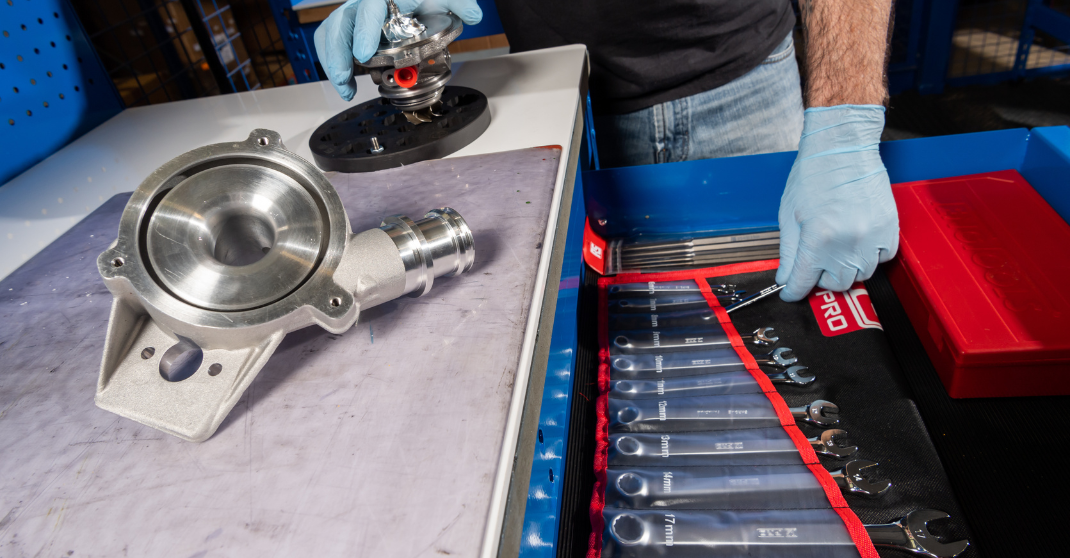
As a leading specialist in precision-engineered turbochargers for the aftermarket, we have highlighted the critical connection between diesel particulate filters (DPFs) and turbocharger performance, particularly in the context of MOT compliance.
For a vehicle to pass its MOT test, all its emission control components, including the turbocharger and DPF, must be functioning efficiently, says Tom Wright, our group product manager.
A malfunctioning turbocharger due to a blocked DPF will lead to higher emissions, reduced engine performance, and potentially visible smoke from the exhaust, all of which can result in an MOT failure.
What’s more, a blocked DPF can significantly damage a turbocharger, stressing the importance of ensuring both components function efficiently.
“Technicians must check for DPF issues when installing a replacement turbo to prevent the new turbo from failing prematurely,” Wright advises.
The dangers of blocked DPFs
A DPF check has been a part of the MOT test since 2014 and vehicles will fail the test if the DPF has been removed.
Since late 2009, all diesel-powered vehicles have featured a DPF designed to capture soot and remove it from the exhaust gas. To maintain DPF efficiency, regeneration processes burn off excess soot.
However, factors such as fuel type, oil quality, driving style, and vehicle age and mileage can impede these processes.
Vehicles driven on short or low-speed journeys often don’t reach the necessary temperatures to activate regeneration.
“Blockages in the DPF prevent exhaust gases from passing through the system at the required rate, leading to increased exhaust gas temperature and back pressure,” Wright explains. “This can affect the turbocharger, causing oil leaks, performance degradation, and even component failure.”
The impact on turbochargers
Increased back pressure forces exhaust gas through piston ring seals into the turbo core assembly (CHRA), leading to excessive temperatures within the CHRA.
This impedes efficient oil cooling, potentially carbonising the oil, restricting oil feeds, and causing wear to the bearing systems, especially on the hot side of the turbo.
High temperatures can also increase the risk of fatigue failures of the turbine wheel.
A blocked DPF can force exhaust gas through small gaps, including the clearances in the bearing housing variable nozzle turbine (VNT) lever arm and turbine housing wastegate mechanisms.
This can result in carbon build-up, restricting lever movement and affecting turbo performance.
Additionally, oil leaks into the compressor housing may occur as exhaust gas forces its way into the CHRA from the turbine side, pushing oil through the oil seal on the compressor side.
Importance of addressing DPF issues
“It is critical that any DPF issues are identified and rectified before installing a replacement turbocharger,” says Wright. “Failing to address the original problem means the replacement turbo will operate under the same conditions as the previous unit, leading to the same failure in a significantly shorter time.”
For more information, including technical resources or how to find your nearest turbo specialist, please contact us


